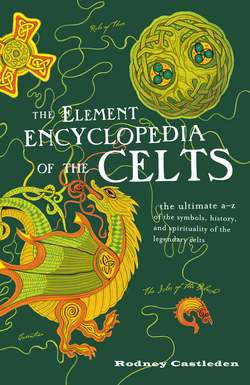Читать книгу The Element Encyclopedia of the Celts - Rodney Castleden - Страница 134
ECONOMY
ОглавлениеThe Celtic economy was strongly rural in character, with some arable farming and a great many livestock. The Iron Age landscape was a patchwork of small irregular fields and meadows, with scattered round huts separated by substantial areas of dense forest.
By the end of the Bronze Age a particularly hardy form of wheat called spelt and a new hardy type of barley (hulled instead of naked barley) were introduced into Britain. These innovations meant that in the Iron Age a crop could be sown in the autumn and harvested in the spring—before the spring-sowing. The Greek writer Hecateus observed that as early as the sixth century BC the people of Britain reaped two harvests a year.
The fields were irregular in shape, but on average roughly 1 acre (0.4 hectares) in area. It was the size of field that could be plowed in a day by two oxen ambling along at 2 miles (3km) per hour.
The farming year was marked by four major quarter-day festivals, Imbolg, Beltane, Lugnasad, and Samhain.
